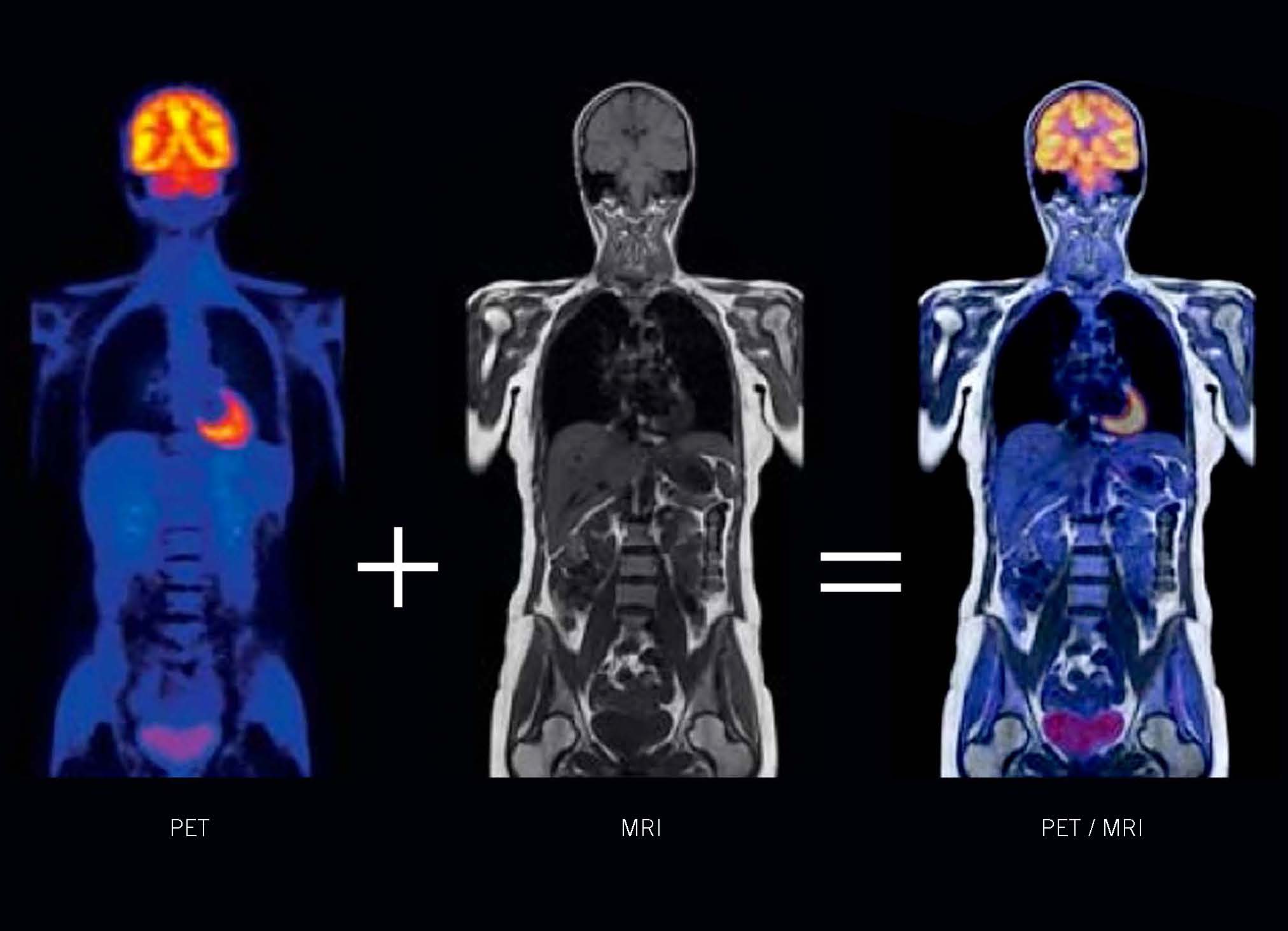In September 2013, Stony Brook Medicine installed a simultaneous PET/MRI scanner — the first on Long Island and the 10th in North America. Called the Siemens Biograph mMR system, it was cleared for use by the FDA in June 2011. To accommodate this breakthrough technology, Stony Brook built a separate room for the machine, equipped with lead and radiofrequency shields in the Lisa and Robert Lourie Imaging Suite.
What it is: As its name suggests, the PET/MRI scanner allows two different modalities to be performed on one machine simultaneously. This means that it combines the soft tissue contrast of the magnetic resonance imaging with the molecular information provided by positron emission tomography. However, performing the tests simultaneously – capturing metabolic activity and anatomy together – offers doctors a more precise and accurate assessment of disease, as well as an improved understanding of the physiologic process. The precision it offers cannot be emphasized enough. Because body parts are continually in motion, a separate PET and MRI scan of the same spot may produce slightly different images. When done simultaneously, the images are completely aligned, giving exceptional precision and image quality.
Why it is used: For patients with cancer, the PET/MRI can be used for diagnostics and staging. And because it can more accurately localize the tumor, it is ideal for surgical planning. It can also be used for cardiac imaging, neurodegenerative disease and psychological disorders. In addition, with the PET/MRI, patients are exposed to much lower levels of radiation than with the PET/CT. This not only benefits patients who have to undergo multiple scans, but also sensitive populations such as children.
The new scanner also helps improve the overall patient experience, requiring just one appointment for two modalities. During the testing itself, patients need minimal changes in positions between tests, which in turn, allows physicians to compare tests more easily and get information as accurately and quickly as possible.

Stony Brook is also using this new technology for research studies and protocols, including the study of radioisotopes and new tracers for cancer treatment. Other research applications include oncology, cardiac, neuropsychiatric and neurological disorders, including multiple sclerosis. There is also a master research agreement with the vendor on protocols, data feedback and other measures to track its efficacy and use for future upgrades – all of which ultimately benefit the patient.


